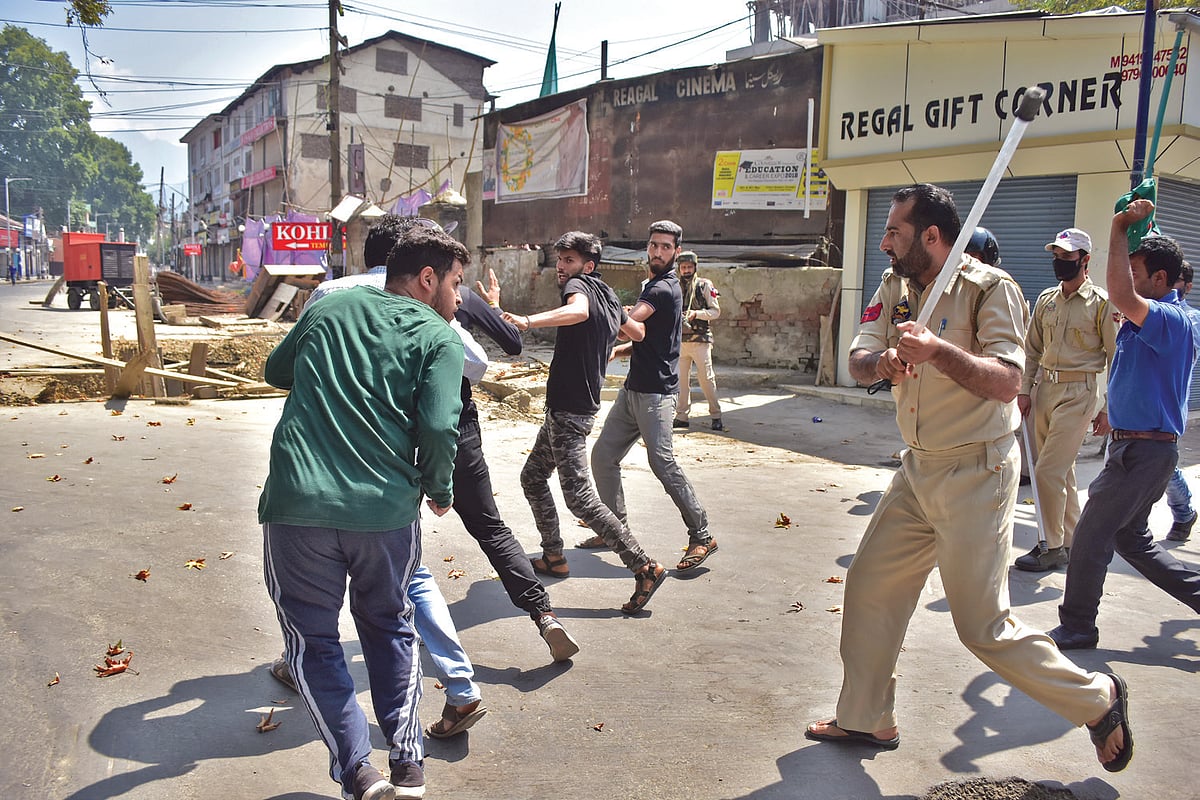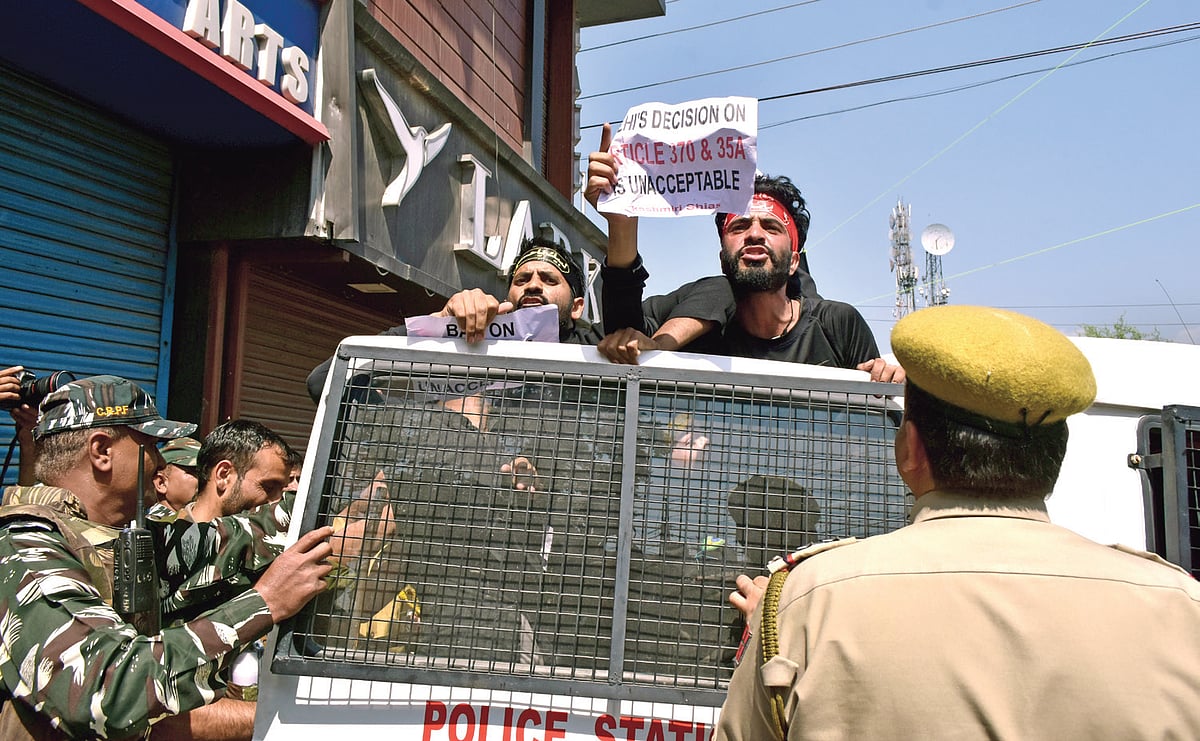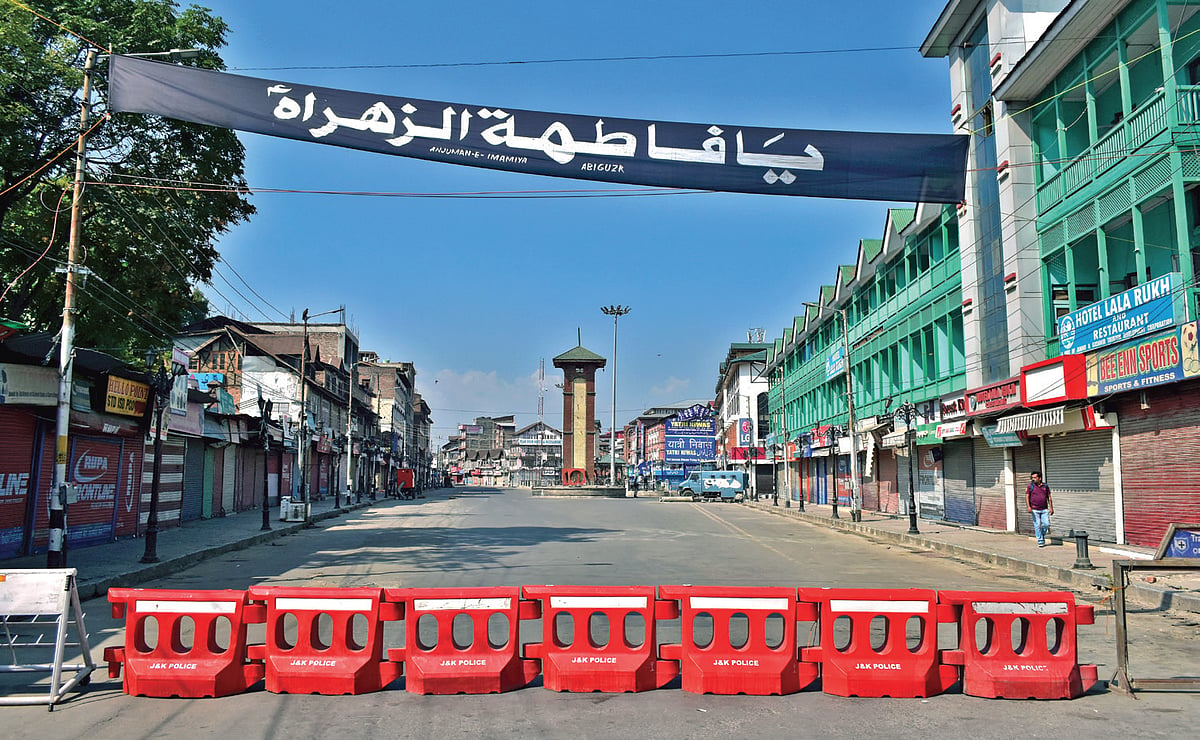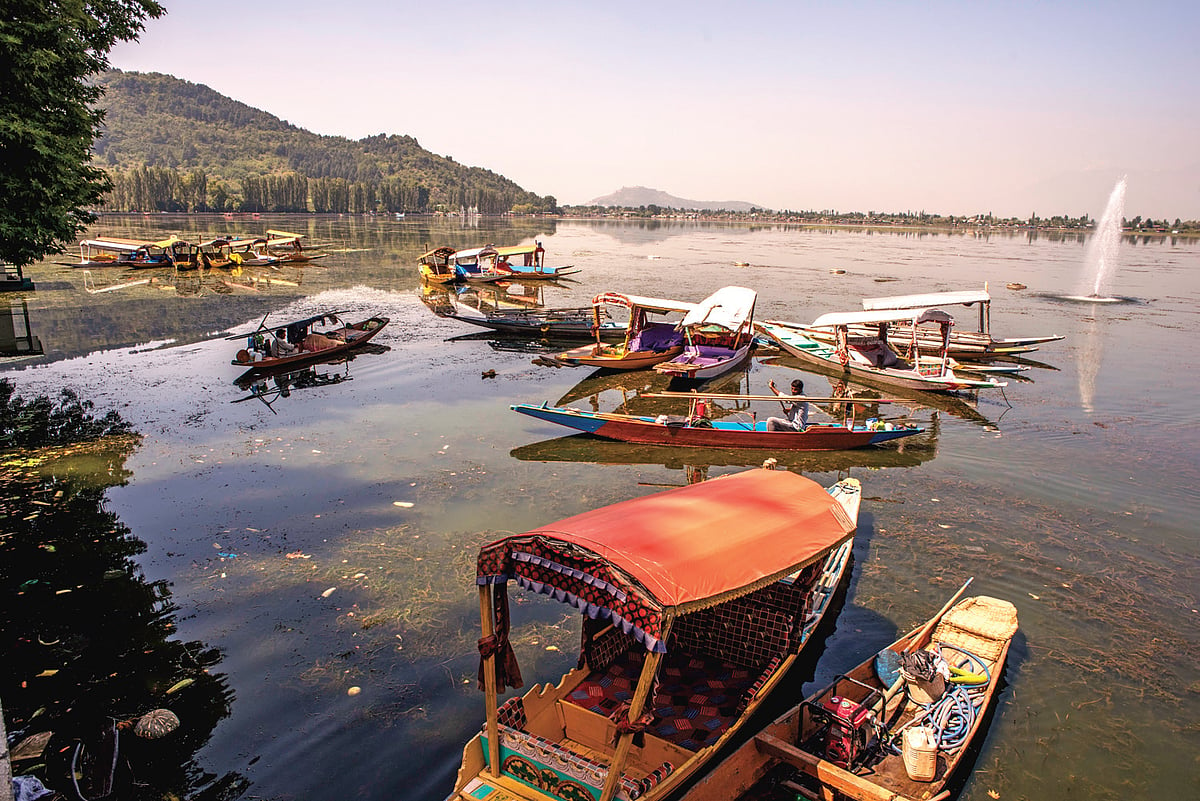“Modi has destroyed us,” laments vendor in Srinagar, wonders why honeymooning couples would return
Kashmiris in Srinagar are coming to terms to the loss of business, tourism and trade. not one of them believes in the ‘Achhe Din’ rhetoric of the Government and the BJP

No data. As the aircraft landed in the small, picturesque airport of Srinagar on a sunny afternoon on August 31, the usual announcement in the flight said that now passengers could take off their seat belts and switch on their mobiles. Truly and ironically, this is no more treated as dark humour amongst most Kashmiris on the flight. And, yet, everyone switched on their mobiles, including this reporter, as a reflex Pavlovian reaction.
Predictably, and inevitably, nothing happened. No data, said the mobile screen. The mobile remained as dead as ever, like an object without desire, sound or expectation.
For more than one month now, since the abrogation of Article 370 and 35A by the BJP-led government, the Valley and its people have lived in a vast, extended, endless prison, holed up in their homes, ghettoised, regimented, compartmentalised, dehumanised and brutalised.
Virtual curfew-like conditions stalk both uptown and downtown Srinagar — especially the latter — with its maze of labyrinthine inner lanes and bylanes.
Downtown, every five feet, you have armed security personnel, while barbed wires and check posts crisscross the capital of Kashmir. Thousands of troops have taken over Srinagar, its main squares and streets and marketplaces, and even the inner lanes. All shops remain shuttered in protest. A ‘civilian curfew’ is relaxed for a couple of hours in the morning and evening to allow a chemist shop or a grocery store to open; a few people come out in the uptown streets like in the Joggers Park at Rajbagh, or around the empty Dal Lake which stretches for 13 km across the city with its sad and prolonged twilight.
All shikaras, houseboats and boats are empty — there is not one single Indian or foreign tourist in sight: not in Srinagar, not in Gulmarg or Pahalgam, not in Chashme-Shahi with its sweet fountain water, or in the lovely summer gardens built by the Mughals. Some shikara owners are forced to sell vegetables on the streets, while apples and pears, now in their prime and ready to be packed in neat rows in cases and transported across the nooks and corners of the country, might all face death and decay. Who will buy rotting apples anyway?
“Modi has destroyed us, the economy, all business. Which foreign or Indian tourist will come here in these oppressive circumstances? How can honeymooners choose to be happy in this total realm of sadness,” said a vendor selling kebabs near the Dal Lake.
The mandis and markets are down, the fruit-sellers and traders are in despair, the carpet business is down and the economy seems hopeless with losses in thousands of crores. Taxis don’t run, the public transport system is crippled, the buses at bus stand have not moved since a month, and even the trains have come to a halt.
The legendary ghanta ghar — clocktower — where Jawaharlal Nehru and Sheikh Abdullah once addressed a mammoth gathering in the post-Independence era, looks tragic in its stark loneliness. The press area near the famous Lal Chowk is shut and barricaded. Newspapers like Greater Kashmir, Kashmir Reader and Rising Reader seem to have vanished from the locked down public space. Anyway there are no newsstands which are open, and hawkers surely can’t cross innumerable barricades, barbed wires and armed check-posts to deliver the newspapers which no one wants to read.
The newspapers have been reduced to four pages. Editorials have disappeared. Transparent censorship operates in full public glare. Editors are scared or have been terrorised. Only government propaganda hits the front page and news is nothing but the official version. There are no ground reports or breaking news photos, no stories about hospitals, patients and stone-pelters, peaceful and violent protests, slogans and placards, shortage of medicine and food, schools which are shut, or the economy which is crippled.
Instead, one journalist informed, you can find an op-ed article on the benefits of Botox. It kind of reminds one of newspapers in Nepal when King Gyanendra had declared an emergency many years ago and the Nepalese army took over media offices. Those days, editors, in a spoofy protest, would write ironical editorials on socks and shampoos.
A woman had no communication with her cousin who was seriously sick. When she finally reached the relative who lives on the outskirts of Srinagar, the cousin had been dead for three days. People speak in hushed whispers about similar stories. A woman apparently died because she was choked by teargas in her house. A boy jumped into a river in early August and disappeared because he was being chased by armed soldiers. Another boy shot with pellets died a month later — his diagnosis clearly says that he died of gunshot injuries.
The security forces deny it. Most injured by pellets don’t go to doctors or the two main hospitals, including the Sher-e-Kashmir Institute of Medical Sciences near Saura which has been rocked by daily protests and stone-pelting. Private nursing homes and clinics are shut. “I do open my clinic for a couple of hours. But no one comes out of fear,” said a senior doctor from Budgam. Most government employees stay away from work.
An 85-year-old man got hit by a car but could not reach the hospital because of the several armed barricades and too many questions asked. He died on the way. Similar stories about ambulances or private cars with patients getting stuck on barricades can be heard all over in Srinagar.
It may sound like a cliché but this is the typical truth of the daily cinema of life in black and white on the eternally empty streets of Srinagar, though some cars do move, there is no official curfew, and journalists don’t need a curfew pass anymore.
A woman in salwar kameez, with a bag, or holding the hand of a child, briskly walks past a military check post, armed security forces, sand-bag barricades or barbed wires. Where is she going and why, when almost the entire population is holed up in their homes? This is a typical and classic image of the situation in Kashmir.
It’s like a war going on out there, with the security forces’ Vajra and armoured vehicles on the streets, while gun-toting soldiers stand on tops of jeeps surveying the streets. If you have seen World War II movies and documentaries, even films on fascism in Europe, for instance, Berlin or Paris under siege, Kashmir will remind you of these films.
India seems to have totally lost Kashmir, said a police officer, off the record. Even those — and they were many — who were decisively pro-India, seem to have turned around, with great unhappiness. Pro-Pakistan feelings have become strong, more entrenched, deriving more political legitimacy.
“Besides, whether you agree or disagree, Kashmir has been internationalised,” said a local journalist. “After 70 years, it was discussed in the United Nations. Donald Trump reiterated and then backtracked, but it was all over the international media that America was ready to mediate. China has not taken kindly to the recent developments in Kashmir and is fully backing a resurgent Pakistan. A watchful Russia has said it is a bilateral affair, but it sounds more like a tongue-in-cheek under-statement.”
Top politicians in the US have called upon India to stop human rights abuses, restore democratic rights and open the communication networks. Human rights bodies all over the world have condemned the violation of fundamental rights even while international media organisations like the Washington Post, The New York Times, BBC, The Guardian and Al Jazeera have consistently reported the ground situation in Kashmir, including the atrocities faced by the people. Indeed, Kashmir has become an international issue.
Of late, midnight raids seem to have stopped, and young people are apparently not being picked up any more. No one knows the exact count but locals allege that at least 4000 people, including politicians and several youngsters, have been picked up, most of whom are either under house arrest or imprisoned in Hotel Centaur next to the Dal Lake since the clampdown.
Traders and businessmen too have been arrested. No one knows the whereabouts of several men, including young boys, who have allegedly been sent to prisons in UP, like the Agra Jail. Parents are running from pillar to post to seek some news of their children.
There have been reports, including visual documentation, of torture and beatings by the police. Many times, it is reported that youngsters are beaten up brutally to seek the names of other young men in the neighbourhood. There is one dark video of women of a family running after security forces in the dead of the night after one young person in the family was forcibly dragged out.
On the night of August 31, Moharram was being observed by members of the Shia community in Lal Bazaar in downtown Srinagar, in a maze of lanes and bylanes. There was no presence of security forces in the night as scores of men and women in black assembled in a hall, to listen to the tragic story of the sacrifices of Karbala.
Outside, in the lanes, young men on bikes are patrolling the streets to implement a ‘night blackout’. Everything is anyways shut, and homes are dark. Except for Lal Bazaar, there are no people on the streets or peeping out of their windows. The blackout is strictly implemented. Headlights of the vehicles are smashed if they are switched on.
Locals are seething with anger. “They are not allowing Moharram processions this time. Not even black flags and banners. This is unfair,” said a young man dressed in black. A young politician, who is lucky to not have been detained, said, “Why are they denying us the right to observe Moharram peacefully? Are we not suffering so much already? Our business is down. We can’t communicate. Even Eid was spoilt. Did we indulge in a single act of violence in this area? We have not even protested here. We don’t want to go with Pakistan, nor do we want sovereignty. So, why are they denying us our constitutional rights? We too are patriotic Indians.”
Across the outskirts of downtown Srinagar, Saura and Aanchar have been declared as ‘liberated zones’ by the people there. Roads have been dug up, huge boulders placed to block forces’ movements, huge piles of bricks have been collected, barbed wires strewn around, and young men organise patrolling in the night to pre-empt any midnight raid. Even Kashmiri journalists find it difficult to enter this fortified area. Loudspeakers blare messages and slogans though the night and even people in the ‘peaceful’ Lal Bazaar can hear them in the distance.
On August 30, people collected in the local mosque for Friday prayers. This was followed by pitched battles with the paramilitary forces. Young girls were seen actively joining the protests. Locals alleged that as many as 150 to 200 people were injured, including 80 young girls. They were all rushed to the mosque instead of the hospitals because they don’t want to be identified. Two doctors were ferried on a boat from across the river to treat the injured inside the mosque.
Locals are not allowed to pray in the famous mosques where they have always prayed on big occasions like Eid. The famous Jama Masjid in the volatile Nowhatta area is shut and barricaded, while accessing the legendary Hazratbal is well-nigh impossible. Two women and children were seen distributing some prasad outside the Hazratbal where the gates have been shut and no one is allowed to enter the premises. This is truly hurtful for Kashmiri Muslims.
“If Hindus are not allowed to go to their places of worship during Diwali, Navratra or Ganesh Chaturthi, how will they feel, you tell me,” said a woman.
Schools are shut, including the prestigious and oldest of them all — the Presentation Convent. Students have been given some homework in the form of video lessons by Delhi Public School. With students holed up in their homes, the schools are empty even as teachers wait for the students to turn up.
Said a mother: “Why should we risk the safety of our children? Can the government give us a guarantee about the safety of our children? Or, will they use the kids like cannon fodder? What if there is a sudden curfew, or street protests, and the forces start firing guns and pellets? Don’t you remember that many of the hundreds of school kids, including infants, hit in their eyes by pellets, have been rendered eternally blind?”
Said another parent: “With all mobile and landlines down, how will the teachers or our children communicate with us in case of an emergency? In this daily and endless trauma, do you want us to add another trauma of our children being out there in the unknown? Besides, what can they learn in this overwhelming atmosphere of fear? Can children in Delhi study if the entire city is turned into a nightmare, like a prison?
Children are the biggest sufferers of fear and anxiety, followed by their mothers and women in the family. Almost 99 per cent people are suffering from post-traumatic stress disorder (PTSD), and children, holed up in their homes, surrounded by barricades barbed wire and gunmen, unable to play or check internet, are facing the brunt of it.
Little children do not even know why life has suddenly become like this, why they are not allowed to go to the terrace, why they cannot meet their buddies in the neighbourhood, or play outdoor games like cricket and football. “Life has become a living hell for children,” said a mother, choked by tears. “What do we tell our children? How do we explain this siege?’
Kashmir’s development index is much higher than many other states of India. Most people are relatively well off. This reporter saw only three beggars in five days: one deranged man wailing, and a silent mother in hijab with her young daughter, standing with her hands stretched, not uttering a word, not even begging.
Education standards are very high — most youngsters speak English even if they might not know how to speak and read Hindi.
“That is the crisis,” said an academic. “Kashmiris also want a career, they have aspirations, they want to do things, reach higher places, study in good universities in India and abroad. They are highly intelligent and competent. Their parents are well off. And yet, India has decisively alienated them. Look at the way they are being hounded in other parts of India, including in places like the Aligarh Muslim University. So, how do you want them to become part of India if you treat them so brutally, humiliate them and make them feel as outsiders?
Follow us on: Facebook, Twitter, Google News, Instagram
Join our official telegram channel (@nationalherald) and stay updated with the latest headlines




